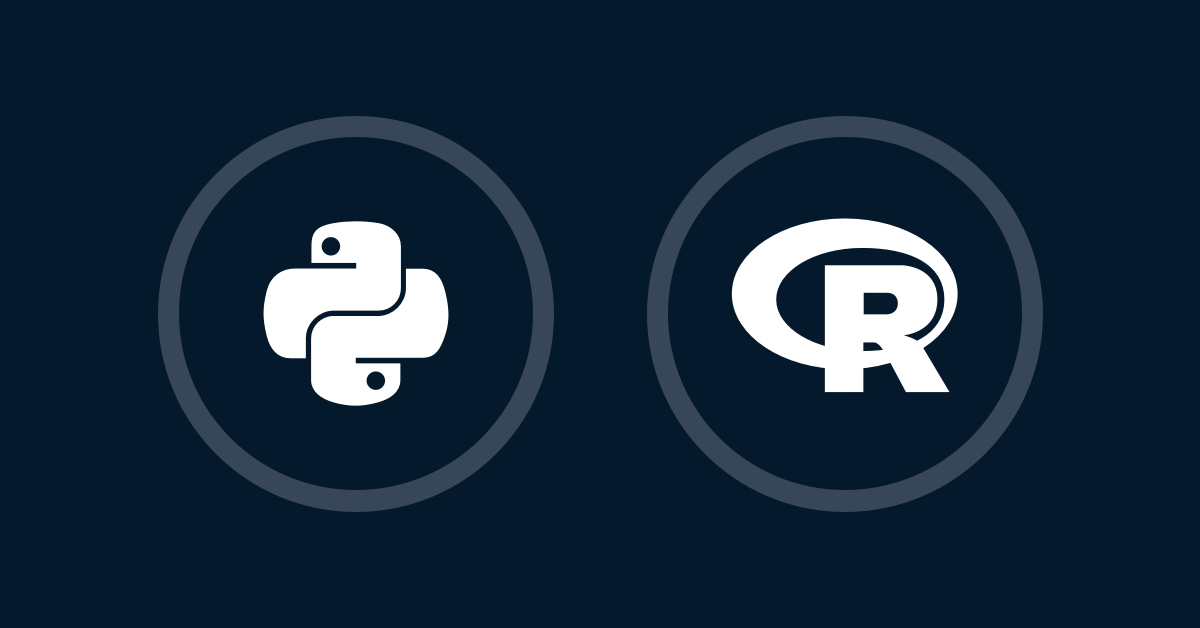
Python is an interpreted, high-level object-oriented programming language. It comes with built-in data structures, dynamic typing(a process wherein type checks are done during the runtime), and binding(mapping of different objects with one another), which makes it a top language used for the development of applications. Python syntaxes are simple, easy to read, and easy to learn.
R is a programming language for statistical analysis or computing and graphics. R comes with a wide range of statistical techniques such as linear modeling, non-linear modeling, statistical tests, clustering, etc. One of R’s strengths is the ease at which a plot can be produced, including the mathematical notations and formulas.
R and Python are both excellent choices for data science, but each has advantages and disadvantages. Accordingly, if you’re new to data science, one option may be more appropriate than the other, and if you already know one, learning the other may still be worthwhile.
There is no question that Python and R can handle the majority of data science tasks; however, there are other considerations that may influence your decision. One tool might be more useful for a particular task, might be simpler to learn for some users than for others, might lead to more opportunities in the workforce, and the list goes on.
Making the right decision is important because learning something new is challenging. Before you start learning Python and/or R for data science, you should be aware of the following.
Which background you’re from?
Consider your background when selecting between Python and R if you’re new to data science. Learning a new programming language like Python or R wouldn’t be challenging if you have years of coding experience, but things are different if you have only recently used programs like Excel or SPSS. Let’s examine who makes use of Python and R, as well as their purposes.
The programming language R, which was developed by statisticians, is primarily employed for statistical computing. Nevertheless, R is used by more than just statisticians; it is also employed by data miners, bioinformaticians, and other experts who perform data analysis and create statistical software.
On the other hand, Python is a general-purpose language that is used for creating GUIs, games, websites, and other things in addition to data science. Python is used for a wide range of tasks by experts like software engineers, web developers, data analysts, and business analysts.
In conclusion, R would probably be simpler to learn if you’re coming from Excel, SAS, or SPSS, but Python would be simpler to use and get used to if you’ve been coding in other programming languages for a while and have a programming mindset.
Which one is more popular for data science?
Before learning a tool, it’s important to keep its popularity in mind. You don’t want to learn anything that has no practical application, I assure you.
On Google Trends, a quick comparison of the keywords “python data science” (blue) and “r data science” (red) reveals the growth in popularity of both programming languages over the previous five years.
Without a doubt, Python is more widely used for data science than R.
Employers, however, look for different things in Python and R experts when it comes to data science. The most prevalent data science tools and techniques that appear in each set of job postings were identified through a comparison of job postings that contain the terms data science and R (but not python) and data science and Python (but not R).
The wordcloud reveals that while job postings with the terms data science and Python include “machine learning,” “SQL,” “research,” and tools like AWS and Spark, those with the terms data science and R frequently include terms like “research,” “SQL,” and “statistics.”
Which one offers the best tools for data science?
The workflow for data science includes activities like data collection, exploration, and visualization. Despite the fact that both Python and R will do the job, each language’s tools and package offerings have advantages and disadvantages.
Data Collection: R and Python both support a wide range of file formats, including CSV and JSON, and R also enables you to convert files created in Minitab or SPSS into datasets. Both platforms also let you use website data extraction to create your own datasets, but Python has more sophisticated tools like Selenium and full frameworks like Scrapy.
Data Exploration: Take a look at the packages used in both R and Python because this is the step where data scientists spend the majority of their time. While R has a variety of packages designed for data exploration, we typically use Pandas and Numpy to explore datasets in Python. Since a picture speaks a thousand words, check out these straightforward exploratory data analyses carried out in R and Python to learn more about the tools employed.
Data Visualization: Basic graphs can be created in Python using the Pandas library, but for customizable and sophisticated visualizations, you must learn libraries like Matplotlib and Seaborn. The issue is that Python visualizations aren’t the most aesthetically pleasing and can be challenging to learn (and remember their syntax for). R excels at data visualization, in contrast. Many common graphs are already supported by R by default, and it also offers sophisticated tools like ggplot2 to enhance the look and feel of your graphs.
Wrapping Up
You already likely know which tool is best for you at this point, but allow me to share what some of the people I know do.
Some people favor Python over R because of its versatility and flexibility, which enable them to perform powerful data science tasks as well as go beyond them, while others prefer Python over R because of its statistics-oriented strength and excellent visualization capabilities.
For the various job opportunities and tools they offer, learning the other would be worthwhile even if you already know one.
Tags: Python, Python vs r, R